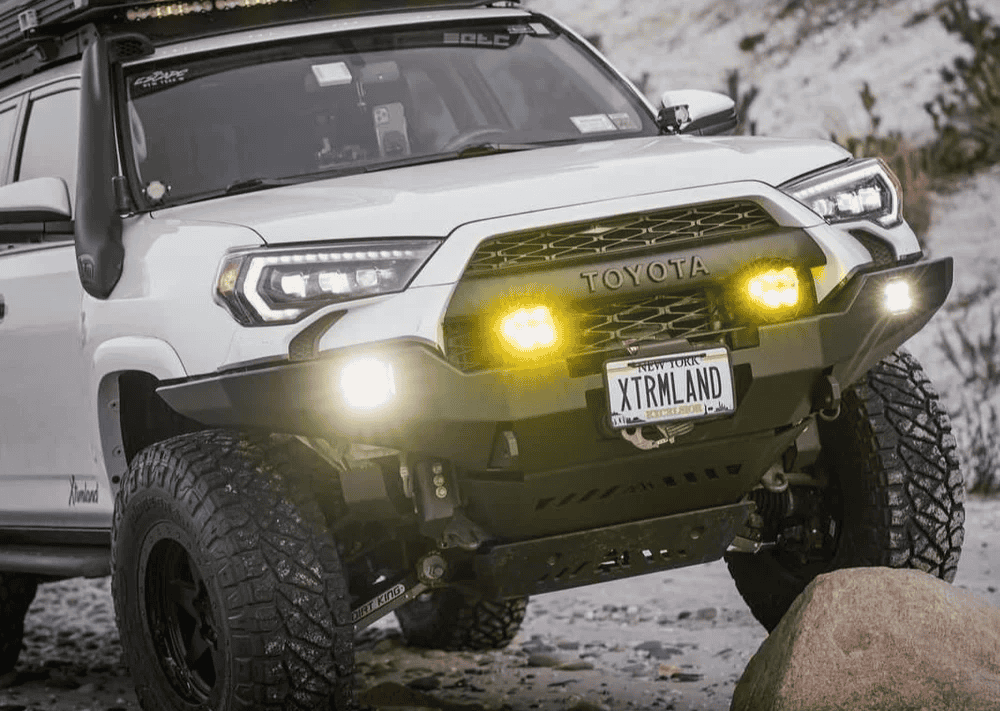Overland Vehicles

Factory ZR2 hardware gives you a head start. Locking differentials add traction control when surfaces turn loose or off camber. Advanced dampers help keep tires planted while preventing harsh bottoming. Skid plates defend critical parts, and the stance improves approach and breakover. For expedition use, think about longevity as much as capability. Larger tires raise clearance, but they also add rotational mass, alter gearing, and influence braking. Plan for alignment, potential revalving, and proper spring rates for the new static load.
Payload is the quiet limiter. Add up fuel, water, tools, compressor, recovery kit, kitchen, fridge, batteries, and camping systems. That number often surprises people. Keep heavy items low and between the axles to preserve handling. Roof loads should be conservative, and the total stacked height should allow safe sidehill angles and low wind sensitivity on highway runs.
Electrical reliability matters in the backcountry. A dual battery or a lithium house battery with a DC to DC charger protects starting power. Solar is helpful for topping off, but alternator charging is the primary workhorse during travel days. Hard mount radios for clear communication, and consider satellite based internet for weather, maps, and check ins when cellular service disappears.
Tires are your first big choice. Pick an all terrain with strong sidewalls if you expect mixed surfaces and long pavement sections, or a mud terrain where clawing traction matters more than noise. Match diameter to gearing and weight. For suspension, think in terms of added static load. Heavier springs and matched damping preserve ride height and stability with the gear you carry every day. Upper control arms and bump stop tuning can refine steering feel and bottom out control. After the first long trip, reassess sag and shock temperatures to fine tune settings.
Even careful drivers make contact. Full length rock sliders, skid plates that cover vital components, and a front solution that allows a properly rated winch reduce risk. Add rated recovery points at both ends and carry soft shackles, a kinetic rope, tree saver, and a ground anchor solution if trees are scarce. Lighting upgrades should improve near field visibility without glare and provide a focused long beam for night highway stretches. Consider an onboard air system for tire pressure management.
A compact fridge and a clean 12 volt system simplify food safety and daily routines. Use a DC to DC charger, adequate fusing, and labeled circuits. Water planning depends on season and group size. A modest tank with a filter and quick disconnect for a shower head keeps the footprint small while staying useful. For storage, a canopy or bed system with drawers and tie downs keeps heavy items from shifting. Pack the same way every time so you can find tools in the dark.
The best expedition trucks are quiet performers. They start every morning, track straight on washboard, and stop predictably on long descents. Keep spares that match your trip profile belts, fluids, a complete tire repair kit, fuses, and critical fasteners. Watch front end geometry when adding height to maintain CV and tie rod angles within sensible limits. If you move to a larger tire, consider gearing and a transmission tune to protect driveline temperature and shift quality.
Planning beats heroics. Build a realistic pace, leave margin in fuel and water, and use checklists during camp breakdown. Tire pressure and temperature matter, so work with a baseline for highway, washboard, and rock sections. Finally, remember that comfort is part of safety. A good sleep setup, shade, and simple cooking systems reduce fatigue and improve decision making on the trail.
When it is time to turn a strong platform into a dependable travel partner, professional fit and finish pay off. OZK Customs outfits trucks with suspension tuning, armor, racks, lighting, communications, and complete interior solutions tailored to real trip plans. Explore our Overland rigs, see options for a Custom overland upfit, and learn how we work on Why choose OZK Customs.
Bring us your route, your crew size, and your gear list. We will map the right suspension rates, armor package, power system, and communications plan so your Chevy ZR2 expedition truck performs day after day. Tell us how you travel and we will build to that standard.
Ready to turn your ZR2 into a dependable expedition truck? Tell us how you travel and we will blueprint your build, from suspension and armor to power and communications. Submit the form to get a tailored plan and timeline from the OZK team.
ADDRESS:
6159 E Huntsville Rd, Fayetteville, AR 72701
PHONE:
(479) 326-9200
EMAIL:
info@ozkvans.com